- Books Name
- Class-8 Science Book
- Publication
- PathSet Publications
- Course
- CBSE Class 8
- Subject
- Science
Organisms Show Variety in Cell Number, Shape, and Size
To study cells, scientists use microscopes to magnify them. They often use stains (dyes) to color parts of the cell and study them in detail.
Number of Cells

There are billions and trillions of cells in a tall tree or a large animal. A human body also has trillions of cells that have different shapes, sizes and functions.
Organisms can be of two types:
Multicellular Organisms
Unicellular Organisms
Some organisms have billions and trillions of cells in a living organism Like Human Beings, dogs, Cat. They are called multi-cellular organisms.
However, there are some organisms that have only one cell Like Bacteria. They are called unicellular or single-celled organisms.
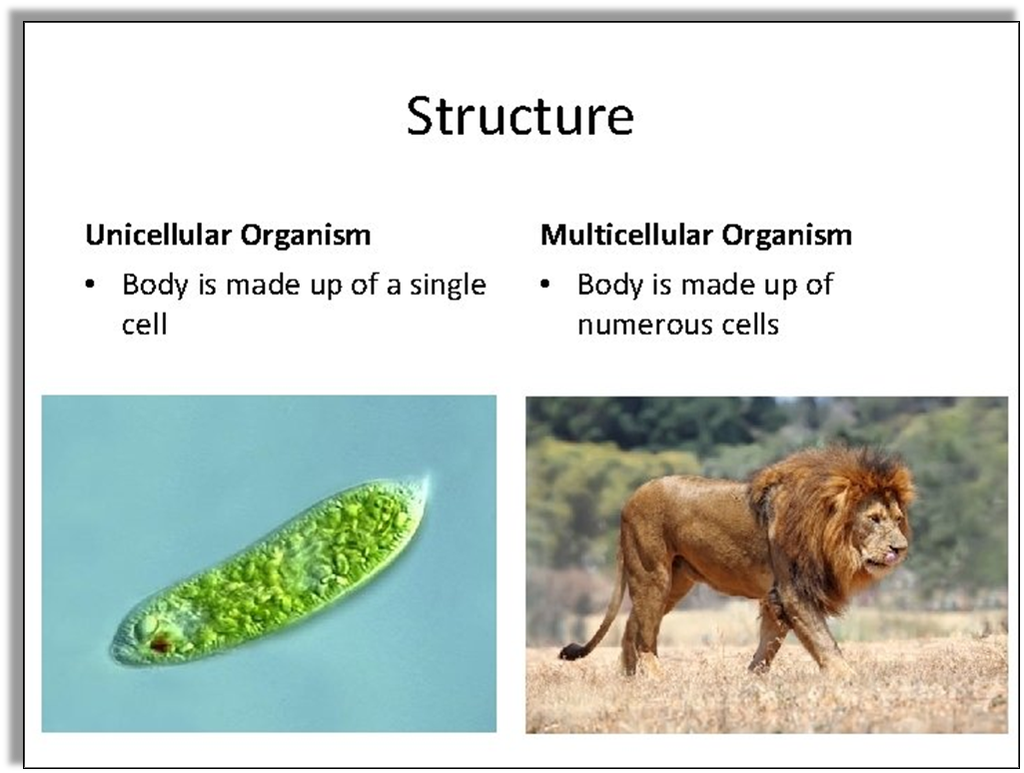
Difference between Multicellular and Unicellular Organisms

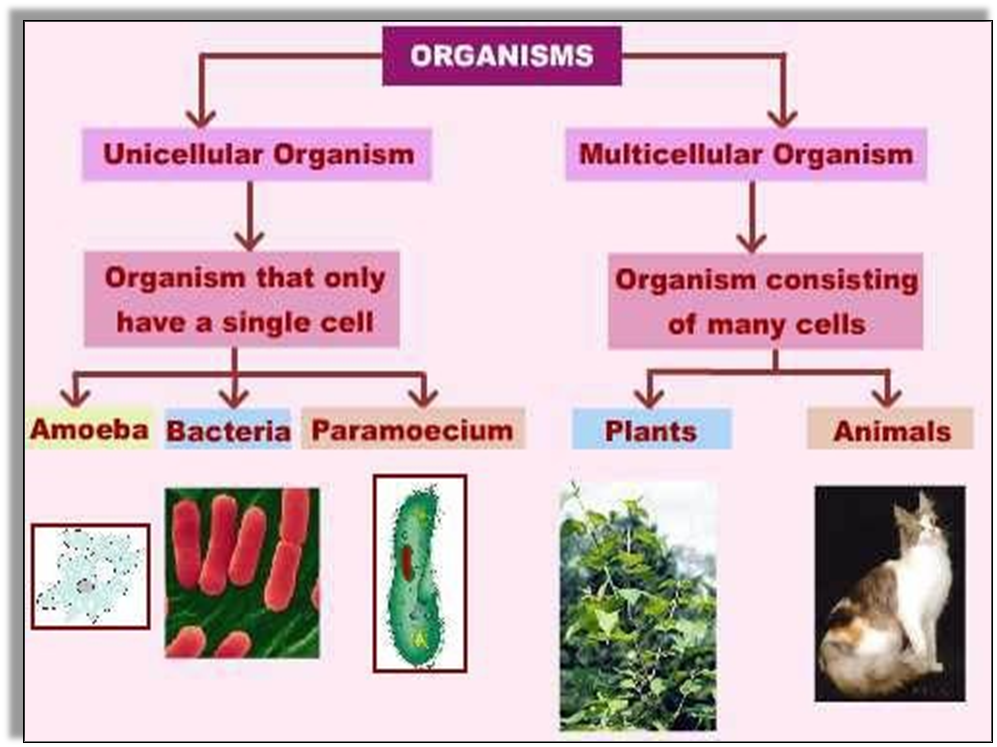
Multicellular Organisms are made up of more than one cell.
For Example, Mango Tree and Frog.
Unicellular Organisms are made up of a single cell.
For Example, Amoeba and Paramecium.
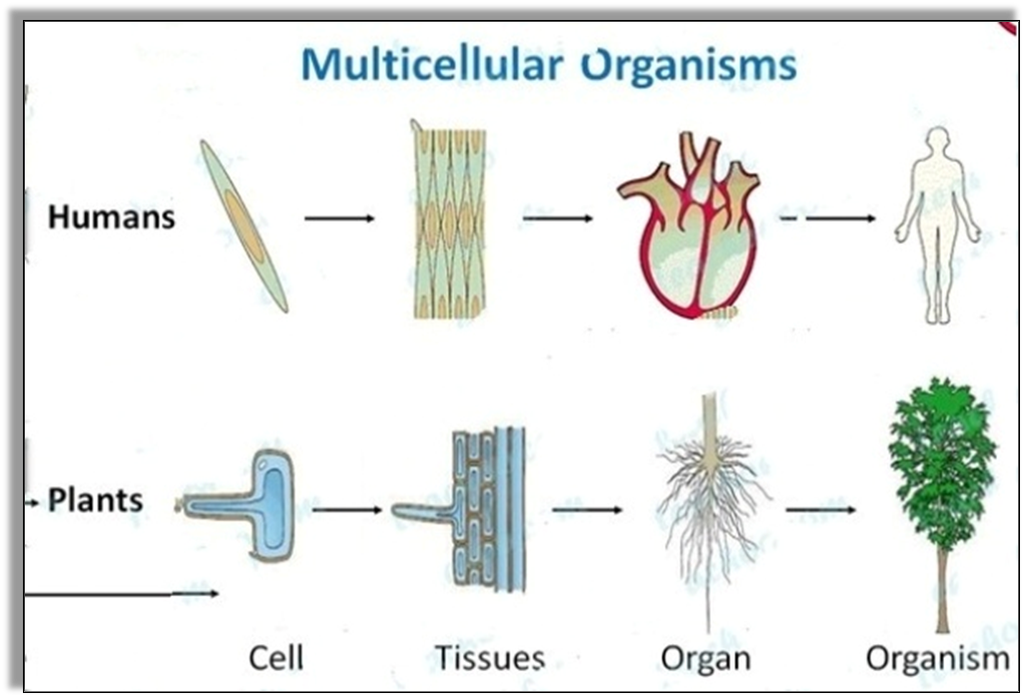
Did you know?
Multicellular organisms with billions of cells also start their life as a single cell. The fertilized egg (which is a single cell) multiplies to form more cells as the organism develops. Single-celled organisms also perform all the necessary life functions like multicellular organisms, including:-
- ingestion and digestion of food
- respiration
- excretion
- reproduction
- growth
The only difference is that while a single cell performs all the functions in unicellular organisms, multicellular organisms have a specialized group of cells to perform different functions. The specialized cells form tissues, which in turn form organs.
Shape of Cells
Amoeba, which is a single-celled organism, does not have a definite shape. Its shape keeps changing as it moves or feeds, protruding parts of its body to form 'pseudo' (meaning 'false') 'podia' (meaning 'feet'). These projects are known as pseudopodia. Humans have millions of cells, such as white blood cells (found in the blood), cells that make up muscles, and cells that form nerves. Their shapes vary according to the functions they perform.
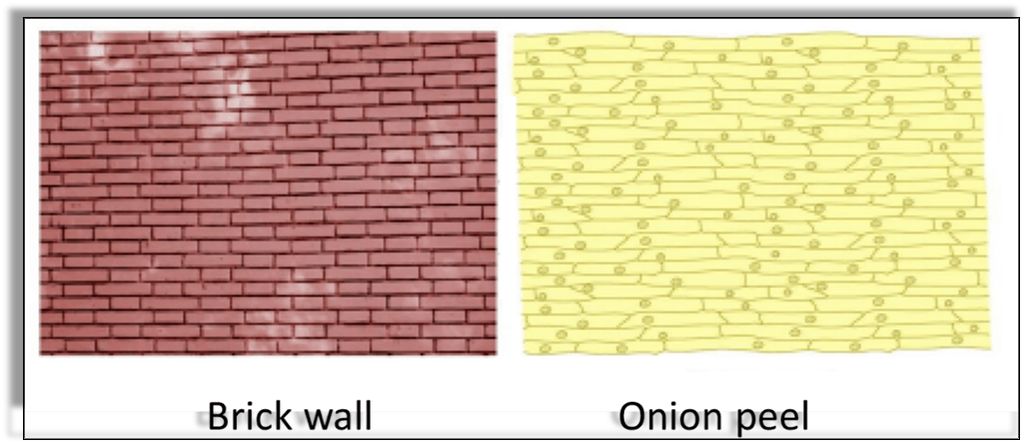
Most cells are round, spherical, or elongated. Some are spindle-shaped which are long and pointed at both ends. Nerve cells or neurons are quite long and are branched out to receive and transfer messages.
Some cells such as that in Amoeba have no definite shape.
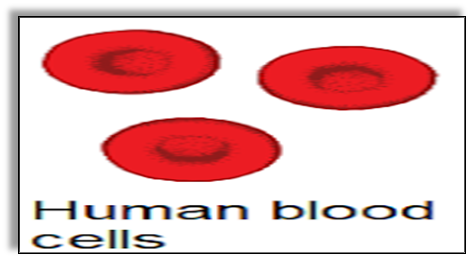
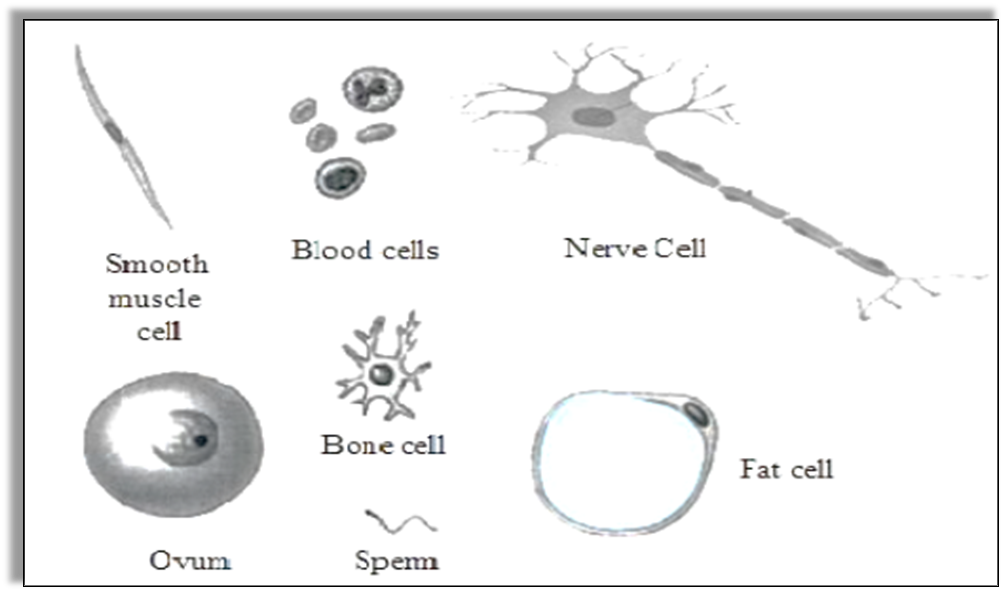
Different shapes of human cells
- Shapes of the cells are maintained by a covering called Cell Membrane or Plasma Membrane.
- Bacterial cells and plant cells have an additional rigid covering called a Cell Wall.
Size of Cells
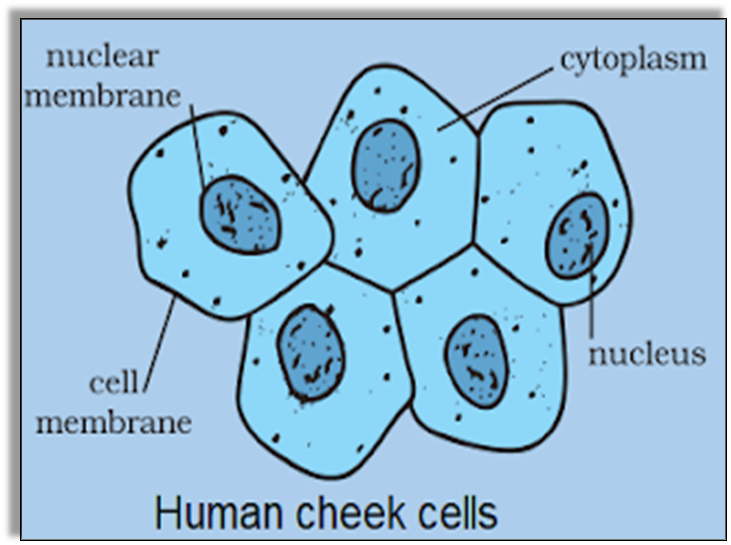
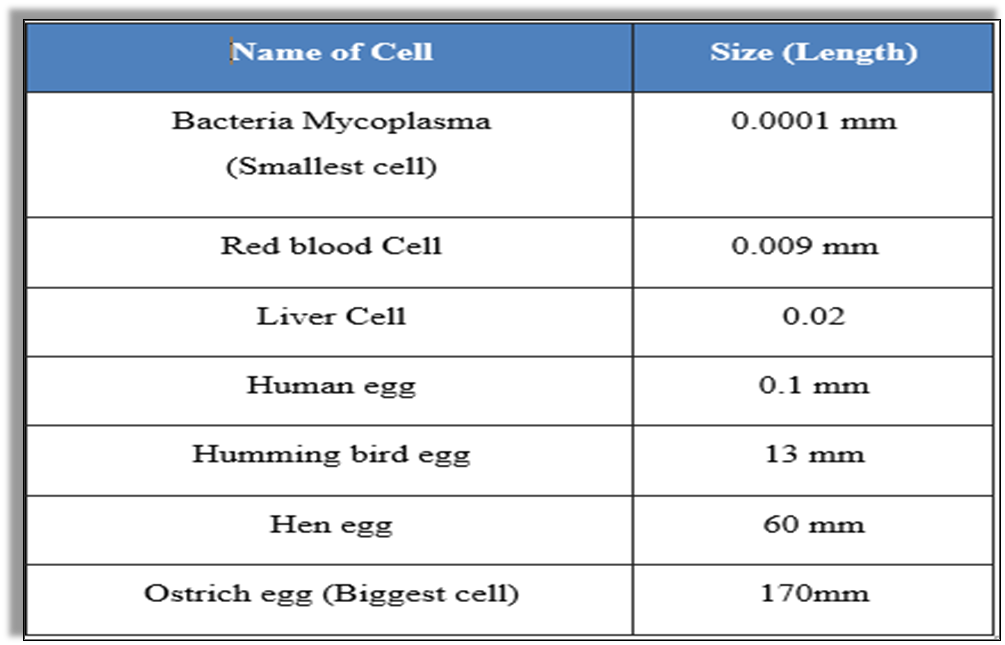
micrometer = 1/1000 mm
1 mm = 1/1000 m
- The smallest cell is 0.1 to 0.5 micrometer in bacteria.
- The largest cell is of size 170 mm x 130 mm, which is the egg of an ostrich.
- The size of a cell has no relation with the size of an organism.
What is the size of the cell?
- Cells are usually very small (microscopic in nature) which means they cannot be seen through the naked eyes
- The size of the cell does not relate to the size of the body
- It is related to the function it performs
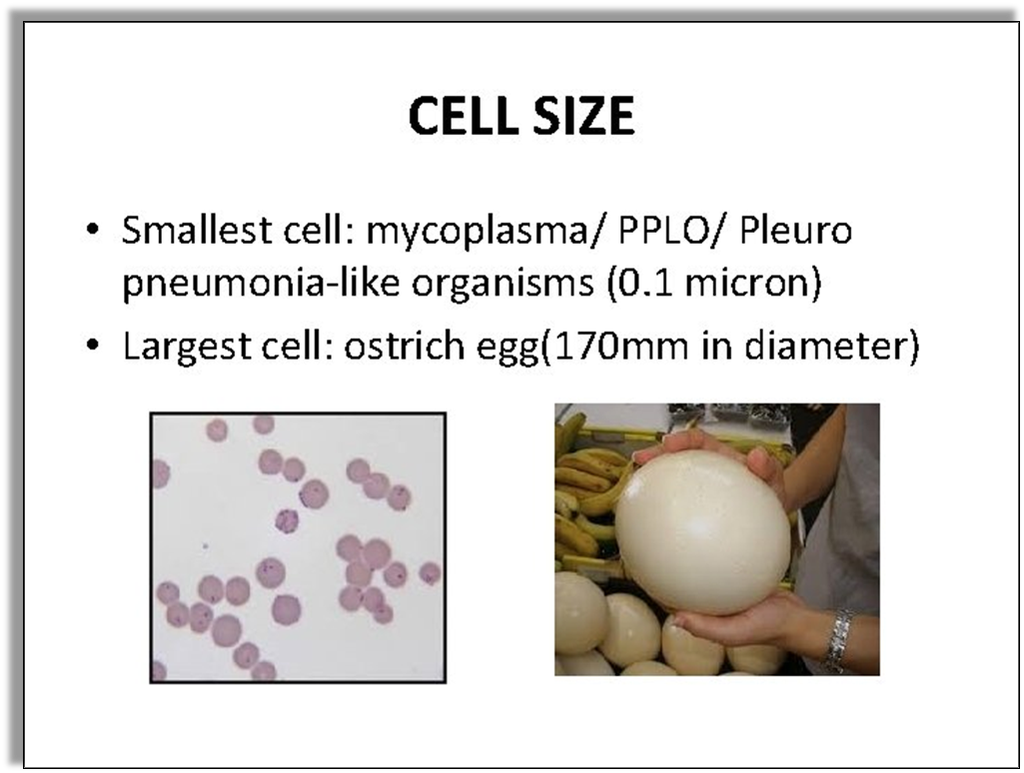
The size of the cells may vary from a millionth of a meter (known as a micron) to a few centimeters but most of them cannot be seen with the naked eye. We need microscopes to see these microscopic cells.

Do larger organisms have Bigger cells?
- No, the size of the cell has no relation with the size of the organism
- It is not necessary that cells in elephants will be bigger than cells in rat
- It is not necessary that the size of cells of a large animal (such as an elephant) will be larger than cells of a small animal (such as a rat).
The size of the cell depends on the function it performs.
For example, the nerve cells of a rat and the nerve cells of an elephant perform the same functions and hence, are of the same size.

 PathSet Publications
PathSet Publications
